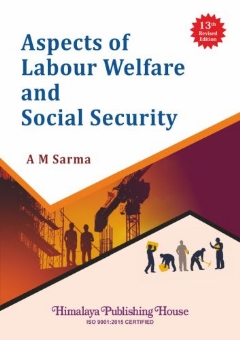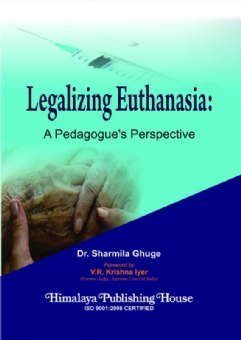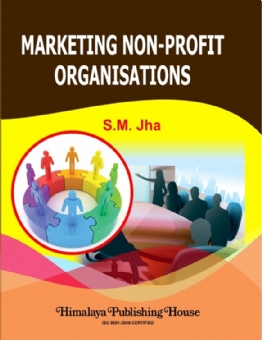This book explores the work environment of employees with disabilities, focusing on key aspects such as workplace comfort, accessibility, and financial benefits. It examines how satisfied employees with disabilities are with their jobs and the accommodations provided. The research emphasises the importance of appropriate employment for a dignified life and highlights the legal obligations under the Rights of Persons with Disabilities Act to ensure a supportive work environment. The study also discusses the need for reasonable accommodations, equal opportunities, and addressing workplace challenges, offering recommendations based on the perspectives of both employees and employers.
Contents –
1. Introduction
1.1 Overview
1.2 Major Existing Research Works Reviewed (International and National)
1.3 Research Methodology
1.3.1 Research Objectives
1.3.2 Research Questions
1.3.3 Research Methods Used in the Study
1.3.4 Data Collection
1.3.5 Data Analysis
1.3.6 Structure of the Project
2. Evolution of Disability Rights in India
2.1 The Evolution of Disability Rights in India
2.2 Models of Disability
2.2.1 Medical Model of Disability
2.2.2 Charity Model of Disability
2.2.3 Social Model of Disability
2.2.4 Human Rights Model of Disability
3. Disability Employment in India
3.1 Introduction
3.2 Issues and Challenges for the Disability Employment in India
3.3 Constitutional Guarantee
3.4 The United Nations Convention on the Rights of Persons with Disabilities, 2006
3.5 Rights of Persons with Disabilities Act, 2016
3.6 Judicial Protection of the Disability Rights
3.7 Policy Makers
3.8 Physical Rehabilitation
3.9 Economic Rehabilitation
3.10 Educational Rehabilitation
4. Data Analysis of the Work Environment of Employees with Disabilities in the Government Organisations at Ahmedabad and Gandhinagar Districts
4.1 Demographic Analysis of Respondents Including Employees with Disabilities and Fellow Employees
4.1.1 Sector-Wise Analysis Categorised into Education, Banking and Administration Sectors
4.1.2 Types of Employees with Disabilities into Visually and Locomotor Disability
4.1.3 Sub-Types of Employees with Disabilities
4.2 Likert Scale Analysis
4.2.1 Comfortability at Workplace for Employees with Disabilities and Fellow Employees
4.2.2 Satisfaction of Nature of Work with Job Profile of Employees with Disabilities and Fellow Employees
4.2.3 Treatment of Fellow Employees at Workplace
4.2.4 Accessibility at Your Workplace
4.2.5 Disabled-Friendly Environment to Outsiders/Visitors
4.2.6 Level of Satisfaction Regarding Necessary Facilities and Assistances Provided at Your Workplace
4.2.7 Treatment of Employees with Disabilities at Workplace on par with Non-Employees with Disabilities
4.2.8 Level of Satisfaction of Financial Benefits on par with Other Non-Employees with Disabilities at Your Workplace
4.2.9 Level of Satisfaction of Grievance Redressal Mechanism available at the Workplace
4.2.10 Level of Satisfaction of Employees with Disabilities Regarding Promotional Policy as par with Non-Employee with Disability at Workplace
4.2.11 Employees’ Perspective of the Employer’s Satisfaction of Employees Work
4.2.12 Perspective of Fellow-Employees’ Satisfaction of Employees’ Work
4.2.13 How far Employees with Disabilities are Treated in the Organisation (Responded by Fellow Employees only)?
4.3 Research Hypothesis Testing
4.3.1 Hypothesis I: Employees with Disabilities are Facing Accessibility Barriers at their Workplace
4.3.2 Hypothesis II: There Exists Equal Treatment towards Employees with Disabilities in the Professional aspects of Financial Benefits (Including Pension, Gratuity) and Promotional Policy
4.3.3 Hypothesis III: The Employer and Fellow Employees’ are Satisfied with the Work of Disabled Employee
4.3.4 Hypothesis IV: The Disabled Employees are treated on par with Non-Disabled Employees in the Workplace.
4.4 Comparison Between Visually Impaired and Locomotor Disability
4.4.1 Analysis of the Number of Disabled Employees who are required to Travel Frequently Between Different Floors and Building at the Workplace
4.4.2 Analysis of the Number of Disabled Employees who are Included in all the Career Advancement Training
4.4.3 Analysis of the Attitude of the Management towards the Disabled Employees
4.4.4 Analysis of the Implementation of Travel and Other Allowance Provision
4.5 Accessibility Level for the Employees with Disabilities
4.5.1 Availability of Lift at all the Floors
4.5.2 Availability of Ramps at all the Floors
4.5.3 Availability of Narrate Facility and Braille Labelling in the Lifts
4.6 Likert Scale Analysis for Employees with Disabilities: Visually Impaired and Locomotor Disability
4.6.1 Comfortability at Workplace
4.6.2 Grievance Redressal Mechanism
4.6.3 Level of Satisfaction with Treatment at Workplace
4.6.4 Level of Satisfaction with Financial Benefits (including Pension and Gratuity)
5. Conclusion and Recommendations
5.1 Conclusion
5.2 Recommendations
5.2.1 General Recommendations
5.2.2 Specific Recommendations
6. References
Questionnaires
Annexure – I : Questionnaires Used for Data Collection in the Survey
Part A : Questionnaires for Employees with Disability
Part B : Questionnaire for Fellow Employees







